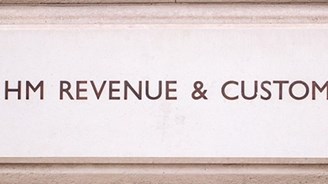Difficulties with Business Property Relief

There have been a number of large cases through the Tribunal system over the last year or so that revolve around claims to Business Property Relief in respect of substantial investment portfolios.
There are two basic tests to be met. There must be a business and that business should not consist wholly or mainly (50%) in the making or holding of investments.
The company owns and manages a business centre, containing land and buildings on an eight acre site, occupied for office and light industrial use. Businesses occupying units do so on a standard licence agreement. The licensees do not have exclusive possession of a unit and monthly licence fees are paid. A service charge is also due in relation to grass cutting, pest control, cleaning of common areas, site security, buildings insurance, water charges, general plumbing/electrical repairs and maintenance, provision of a receptionist to answer telephone calls, sort incoming and outgoing mail, site maintenance and repairs, etc.
It was agreed that most of the services, including security, were types of services a landlord would commonly provide.
A further fee allowed the provision of telephone services, calls and line rental, a forklift driver, secretarial services, photocopying and fax facilities, hire of a boardroom, etc.
The company employs a site maintenance person and a forklift truck driver, a full time receptionist and another person doing the same job part time, and three security guards employed.
The Tribunal considered these principles in deciding whether or not a business consists wholly or mainly of holding investments:
- the various activities involved in operating a business relating to the exploitation of land may be allocated between investment and non-investment activities;
- the question is whether the investment element of the business is predominant;
- the ultimate issue concerns the relative importance of non-investment activities to the business as a whole;
- it is necessary to look at the business in the round. The relative income and profitability of the various activities is relevant but not determinative;
- property management is part of the business of holding property as an investment, including finding occupiers and maintaining the property as an investment. However, that does not extend to additional services or facilities provided to occupiers and it is irrelevant whether the provision of such additional services is included in the lease;
- the test to be applied is that of an intelligent businessman, concerned with the use to which the asset was being put and the way in which it was being turned to account; and
- the test involves a question of fact and degree as to where a particular business falls within the spectrum.
In this case, the parties agreed that the company was carrying on a business and the Tribunal stated:
'The non-investment services provided by the Company include the forklift truck service and the provision of office type facilities. We do not consider that those additional services predominate when considering the activities of the Company as a whole. Even if we were to take out the Burdens side of the business, the real nature of the business remains an investment business exploiting the land by granting tenancies and licences. Most of the income from additional services relates to re-charges for electricity, telephone and postage. The income from the other additional services is very modest compared to the licence fee income. Considering the facts by reference to the nature of the activities and the income produced by those activities puts the Business Centre well towards the investment end of the spectrum.'
The business of the company was mainly holding investments. The appeal was dismissed.
When you next see client you may wish to consider their position vis-à-vis property and then consider IHT solutions.



